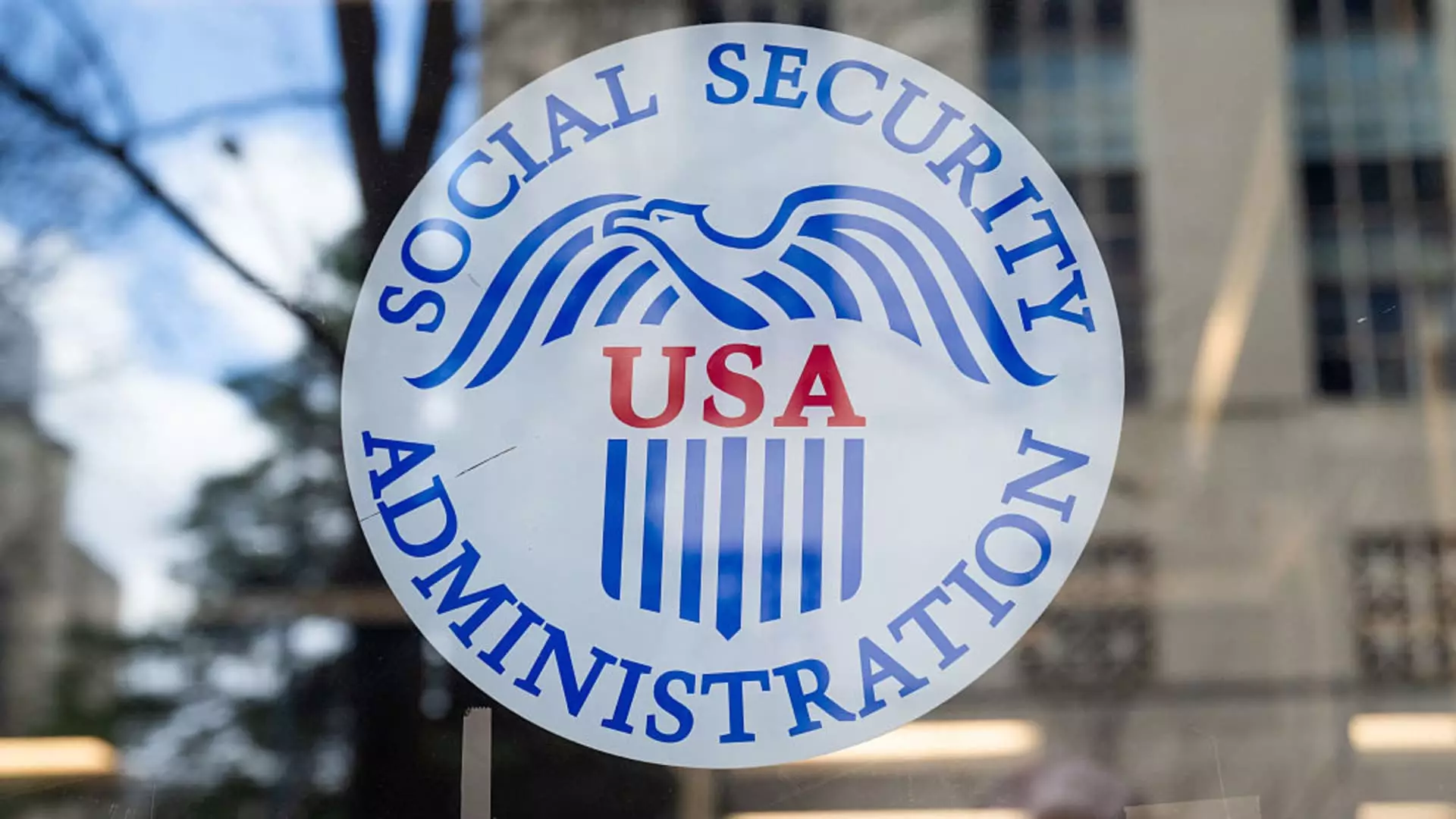In an alarming series of events, the Social Security Administration (SSA) is caught in a whirlwind of changes that could potentially jeopardize the benefits Americans have tirelessly contributed to throughout their working lives. Under the banner of efficiency, the Trump administration’s Department of Government Efficiency (DOGE) is not merely adjusting the agency; it is orchestrating an overhaul that threatens to disrupt services critical for millions. Despite President Trump’s assurances to safeguard Social Security benefits, changes implemented under his leadership raise serious questions about accessibility for beneficiaries, particularly those who are already vulnerable.
The SSA has recently announced plans to trim its workforce by approximately 7,000 employees and shutter six regional offices, a move that has fueled both skepticism and fear among experts. Jason Fichtner, a former deputy commissioner at the SSA, voiced his grave concerns, emphasizing that these cuts may lead to substantial service disruptions. If the administration continues on this path, it risks complicating the lives of those who rely on Social Security benefits, especially individuals with disabilities who may not have the luxury of time when it comes to accessing their entitlements.
The Disturbing Reality Behind Staffing Cuts
When agencies undergo such drastic cuts, the consequences aren’t merely about numbers on a budget sheet; they translate into real-life difficulties for citizens. The SSA is already grappling with legacy issues like long wait times on the phone and overcrowded field offices. Judging by the concerns voiced by experts such as Kathleen Romig from the Center on Budget and Policy Priorities, the prospect of accessing aid may swiftly become an uphill battle for many Americans. Effectively, the agencies that were designed to help them are being hollowed out from the inside.
Imagine a system already strained by an ever-increasing number of beneficiaries suddenly working with a reduced workforce. Field offices will likely become more crowded, prompting even longer waits for services. Those relying on the SSA are left in a precarious position, with delays potentially affecting their ability to cover basic living expenses and healthcare needs. It is hard to reconcile such administrative moves with the promise of protecting Social Security, highlighting the inconsistency and, indeed, the deception inherent within these bureaucratic shifts.
Technology Transitions and Their Risks
Perhaps the most alarming of the changes involves the proposed transition of “tens of millions of lines of code” from an aging programming language known as COBOL. While modernization may be necessary, such an expedited switch in a complex institution like the SSA raises numerous red flags. Unlike typical technology upgrades that are methodically planned and phased in over years, the DOGE’s express timeline is a recipe for disaster.
Fichtner aptly points out that such significant transitions are not accomplished by flipping a switch overnight. The potential for errors is magnified in a rushed process, and those errors could mean life-altering consequences for beneficiaries reliant on consistent and timely disbursement of their benefits. Confidence in the administration’s ability to handle these changes is waning, raising alarm bells that the efficiency touted by the government may come at the expense of those it is meant to serve.
Misplaced Priorities in a Time of Crisis
The administration’s focus seems misaligned. Instead of addressing the fundamental concerns surrounding the sustainability of Social Security, its efforts are concentrated on what many experts view as peripheral issues. Critics point out that while rooting out fraud is essential, it pales in comparison to the looming crisis surrounding the program’s trust fund depletion.
According to projections, the Social Security Trust Funds are expected to be depleted as early as 2033, leading to a situation where nine out of ten beneficiaries could see their benefits slashed. Instead of prioritizing reforms that would ensure the longevity of Social Security, the current trajectory of cuts and hastily implemented changes might leave long-term reforms in the lurch. This emphasis raises questions about the administration’s genuine commitment to preserving Social Security for future generations.
The Path Forward Needs Serious Rethinking
As the landscape of Social Security continues to shift under this administration, it is crucial to ask ourselves who benefits from these sweeping changes. The focus on operational efficiency, while seemingly practical, overlooks the humanitarian aspects of a system meant to protect the most vulnerable citizens. The lightweight administrative budget is not where substantial cost savings will be discovered, and to fix what isn’t broken under the guise of reform is not only misguided but dangerously hubristic.
In the end, it is imperative for the American public to advocate for the integrity of the Social Security Administration. The danger lies not just in the immediate effects of these sweeping changes, but in the long-term implications for a program designed to serve as a safety net for millions. With the tide of changes washing away accessible services, the urgency for thoughtful reform rather than reckless alteration has never been clearer.

